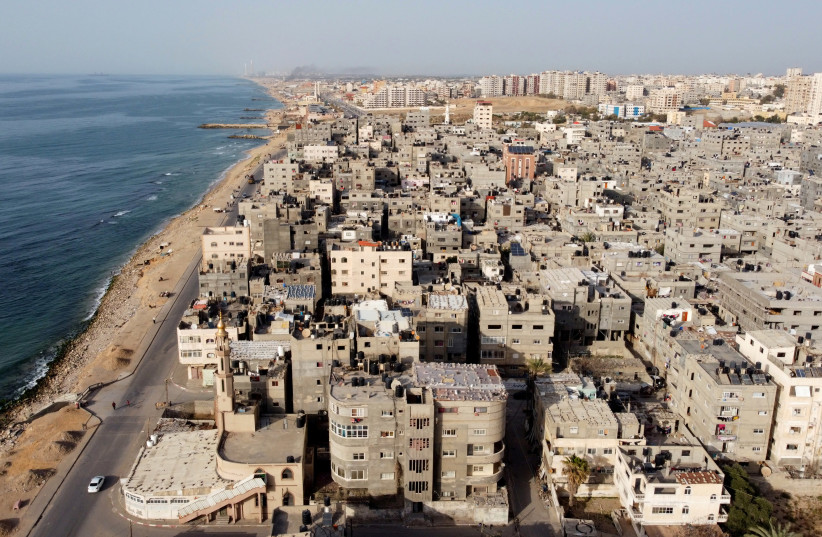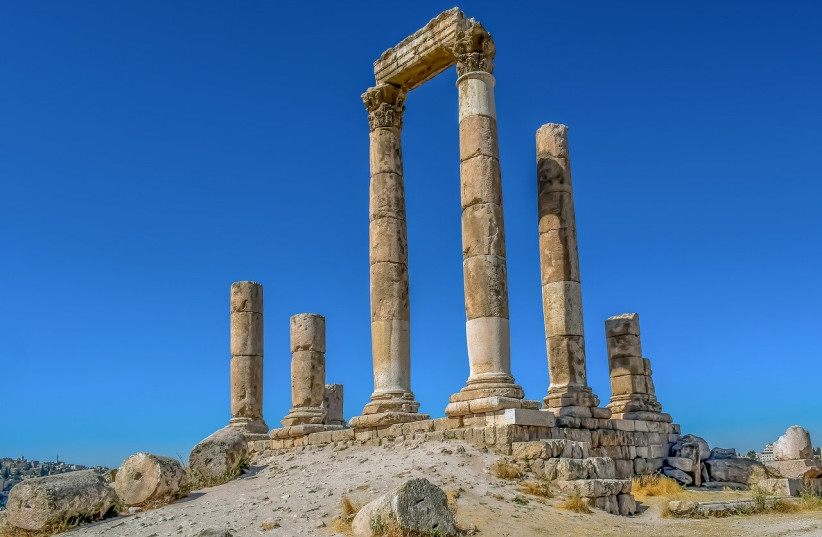Yair Lapid and Subrahmanyan Jaishankar / JNS.org
 An Air India Boeing 787-8 Dreamliner plane lands at the Ben Gurion International airport in Lod, near Tel Aviv, Israel, March 22, 2018. REUTERS/Amir Cohen
An Air India Boeing 787-8 Dreamliner plane lands at the Ben Gurion International airport in Lod, near Tel Aviv, Israel, March 22, 2018. REUTERS/Amir Cohen
If there is one significant point of similarity between Indian and Israeli culture, it is that both are rooted in the importance of text. The Ramayana and the Mahabharata, and the Tanakh and the Talmud, are grand, dramatic epics that tell the story of a people, as well as moral stories which define the norms and the laws of life. When diplomatic relations were renewed between the two countries exactly 30 years ago, both sides felt a sense of curiosity towards the other, but also a sense of understanding. We are two ancient civilizations of storytellers, but we are also two young and energetic democracies motivated by openness towards innovation and the ability to connect with other cultures.
The ancient histories of our peoples offer us perspective. We know that friendship and trust are not only positive qualities but genuine assets in relations between countries. Hanging in the bedroom of Israel’s first prime minister, David Ben-Gurion, was a photo of Mahatma Gandhi, who once said, “The difference between what we do and what we are capable of doing would suffice to solve most of the world’s problems.” Over the past 30 years, we have been realizing the essence of Gandhi’s quote and Ben-Gurion’s vision in our bilateral relationship. We’ve discovered that together, we can do more. Cooperation between us spans a wide range of areas of our lives: agriculture, security, commerce, and innovation.
Agriculture, an ancient foundation of human existence, is one of the main cornerstones of our cooperation. Israel’s arid climate and lack of water sources have brought it to the forefront of identifying innovative solutions to challenges in agriculture and water management. The size of India’s population creates daily challenges which the world has a hard time imagining. And so today, agricultural cooperation between us is unprecedented. Together, we’re operating 29 “Indo-Israel Centers of Excellence” across India. Companies are engaged in crop diversification, solar energy, increasing productivity, and efficient water use.
This cooperation produces millions of high-quality fruit and vegetable seedlings every year, and provides training to millions of Indian farmers with the most advanced agricultural technologies, tailored to their specific needs. In the field of water management, Israel and India are cooperating in technology, knowledge sharing, and joint projects. For example, Israeli drip-irrigation technology has been employed in India for almost 30 years now.
Another element of our relationship is security. Here too, our partnership is growing and deepening. Recently, we participated together in the “Blue Flag” aerial exercise in the skies above the Negev Desert. We share operational knowledge, work together to find solutions for regional challenges and cooperate on counterterrorism. The 2008 terror attack in Mumbai was a stark reminder of the common threats we face.
And of course, our economic and trade cooperation reaches new heights every day. India is one of Israel’s most important economic partners. We are an ideal duo. The industrial capabilities and technological know-how of young Indians, in combination with the unique technological savvy of their Israeli counterparts, create tremendous potential for mutual prosperity. Over the years, we have witnessed significant growth in our commercial ties. Israeli start-ups and entrepreneurs, large Indian companies, and our programmers and IT specialists are becoming natural partners.
Israel is the original “Start-Up Nation” while India has the third-largest start-up ecosystem in the world. Precisely because of this, we’ve established a fund for advanced technological innovation in water, agriculture, healthcare, energy, and communications. At the same time, the number of Indian students and researchers in Israel is increasing all the time.
In the days prior to the pandemic, there were weekly direct Air India flights between Tel Aviv and New Delhi, Mumbai, Kochi, and Goa. For the first time ever, eastward flights from Israel can now fly over the Gulf states, a tangible benefit of the new reality in the Middle East. The new relationships in the region are already bearing economic fruit and herald a strategic change in the Middle East whose ripples are reaching India. This past year we harnessed those new relationships into a new quad group, with India, Israel, the United Arab Emirates, and the United States coming together to lead joint projects and increase business collaboration.
Last November, prime ministers Narendra Modi and Naftali Bennett met in Glasgow, where they emphasized the importance of our relationship and welcomed our fruitful cooperation. And just three months ago, the two of us met in Israel and discussed our vision for the future. We agreed to begin negotiations on a free trade agreement and to work even more closely in significant areas such as artificial intelligence and quantum computing while deepening our existing cooperation.
The establishment of an “India Trail” in Israel to commemorate the Indian soldiers who fell in the First World War and the “Jews of Mumbai Trail” to emphasize that community’s contribution to the city were meaningful tributes to the depth of the friendship between us. The Indian-Jewish community contributed to the building of the Indian nation, including David Sassoon who helped found the Bank of India; Lt. General J.F.R. Jacob, the hero of the 1971 Bangladesh War; Dr. Jerusha Girad; and the poet Nissim Yehezkel. The Jewish community in India has also made an important contribution to Israel’s development, including agricultural scientist Eliyahu Bezalel and cardiothoracic surgeon professor Best Lall-Anson.
We’ll conclude with two of our Nobel laureates in literature, from India and Israel: Rabindranath Tagore said, “But when a man loves, giving becomes a matter of joy to him, like the tree’s surrender of the ripe fruit.” And Shai Agnon said, “Because man is a tree of the field, after all he received deep roots like a tree, unlike a swaying leaf.”
We have been blessed with three decades of friendship to deepen our roots together, and we will continue to work together so that this special relationship will continue to bear fruit long into the future.
 Dr Elżbieta Janicka (Instytut Slawistyki PAN.) z wykładem na Uniwersytecie w Ottawie oraz na konferencji „Lessons and legacies” w Saint Louis (USA)
Dr Elżbieta Janicka (Instytut Slawistyki PAN.) z wykładem na Uniwersytecie w Ottawie oraz na konferencji „Lessons and legacies” w Saint Louis (USA) INTERNET
INTERNET




